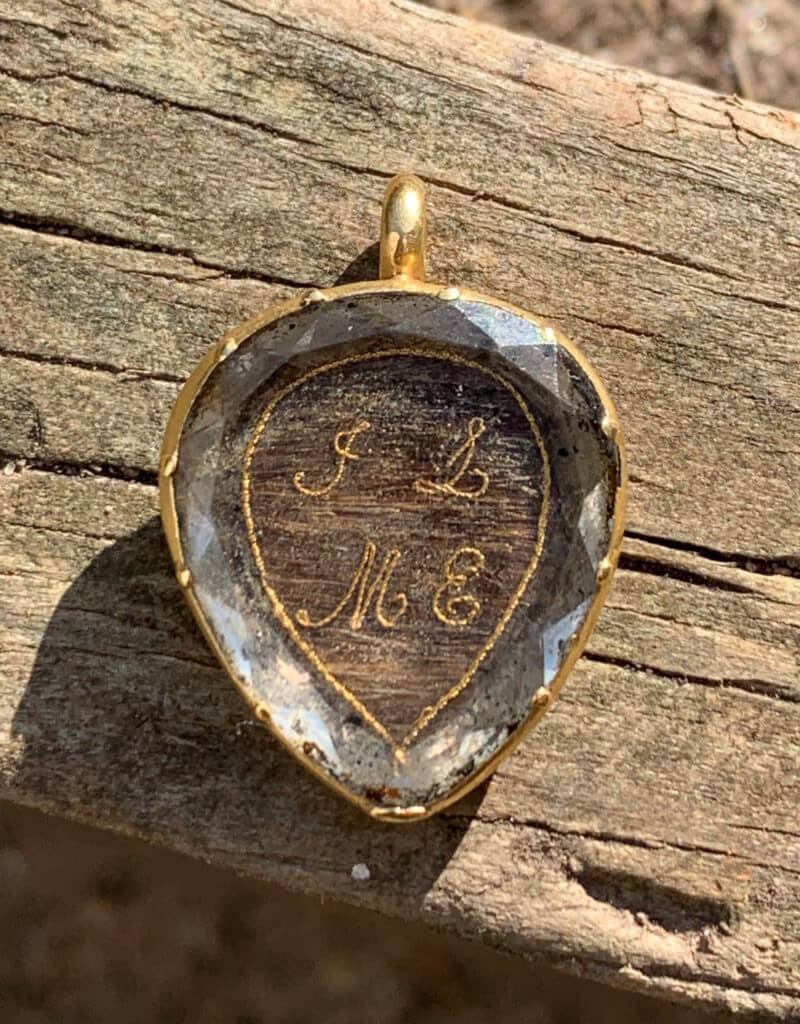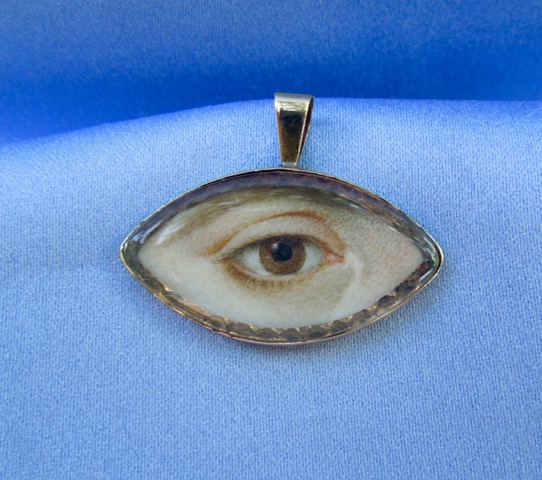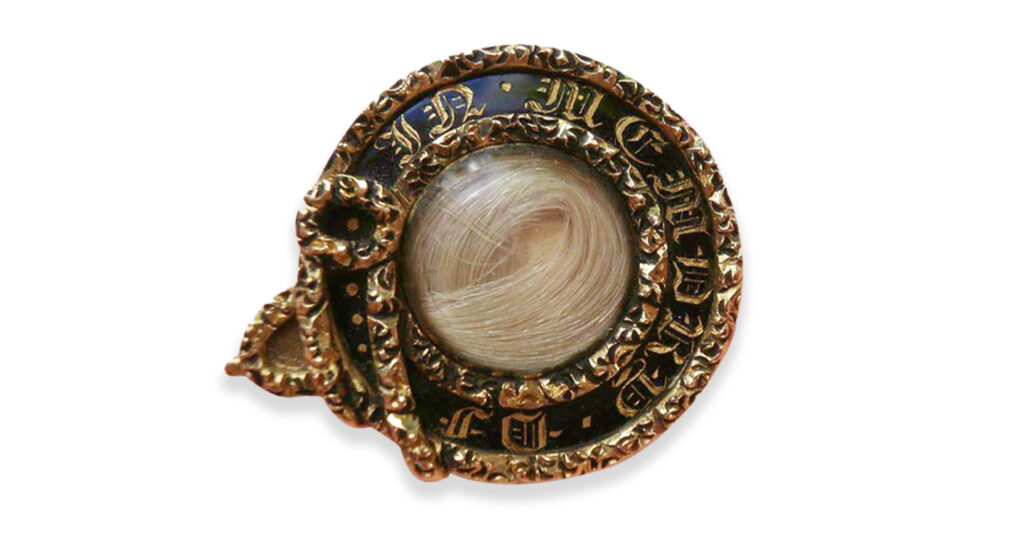‘Not Lost But Gone Before’ Mourning Lockets
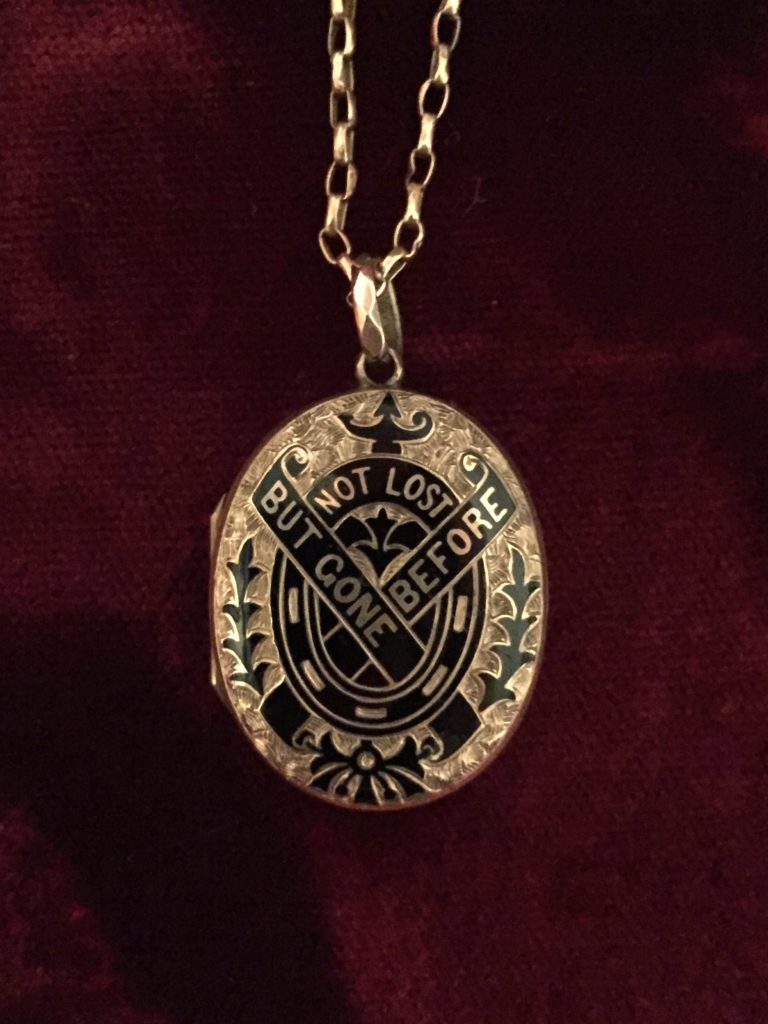
To the Victorians, brand consistency was essential for the development of the British Empire. As with any culture that is looking to expand, the appearance of the culture in art and fashion needs to remain consistent across the continents. From 1837 onwards, the established design of the popular Gothic Revival movement laid the template for how the bolder, Empire styling that can be seen in this remarkable locket from the c.1870s.
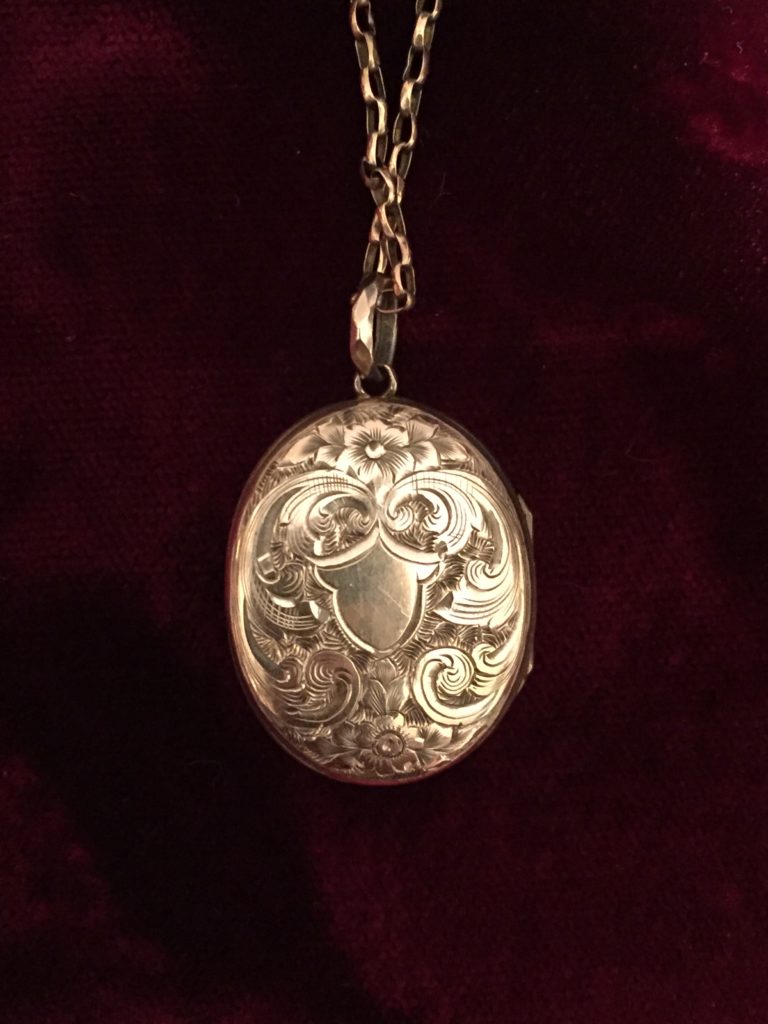
Any ambiguity about the nature of the locket is immediately dispelled when seen. From its large, bold black enamel, encapsulating the symbols of the scroll, horseshoe, urn and wreath, the large ‘NOT LOST BUT GONE BEFORE’ breaks through as the most dominant feature of the piece.
It is important to reflect upon the statement itself. This is a statement of the loved one’s soul remaining alive in the afterlife, arriving before their due time. Eventually, the departed and the wearer will be reunited again in the heavens. It is religiously ambiguous, while being personal to the wearer, a safe token of grief in a quickly growing diverse world. It is a plain statement and one that found its usage in mourning jewels during the c.1760s Neoclassical movement, which was influenced in Europe by the Enlightenment movement and reclaimed values from the ancient world. It removed the focus on the nature of life leading to the final judgement and more about expanding personal values and challenging established thought. By the 19th century in England, much had changed to maintain Christian values and establish the family as being a sacred unit. With jewels like this to constantly remind, in text, that grief was on ample display in fashion, the family is constantly protected and its values are part of how it presents itself.
Note this other locket, which developed its design language in the c.1860s:

Physically, the lockets are nearly identical, with the design being the real elemental change. When identifying closely related mourning lockets, particularly in the 19th century, careful attention needs to be paid to the font and how that developed during the 19th century. Mourning jewels, while holding consistent elements, were very good at adapting to popular culture and fashion in ways that could be tailored out without having to recast an entire piece. The locket style is consistent with generic locket designs (non mourning), but with the cover of the locket having the individual design, the messaging can adapt through the years when they were made. In this style, the font inside the ribbon is softer and the harder lines of the symbols are more curved and flowing, which correlates with the bigger styles of the 1850s and 1860s. It would not be unusual to see these designs being equally contemporary in a catalogue, as the consistency of the latter 19th century retained designs for many years.
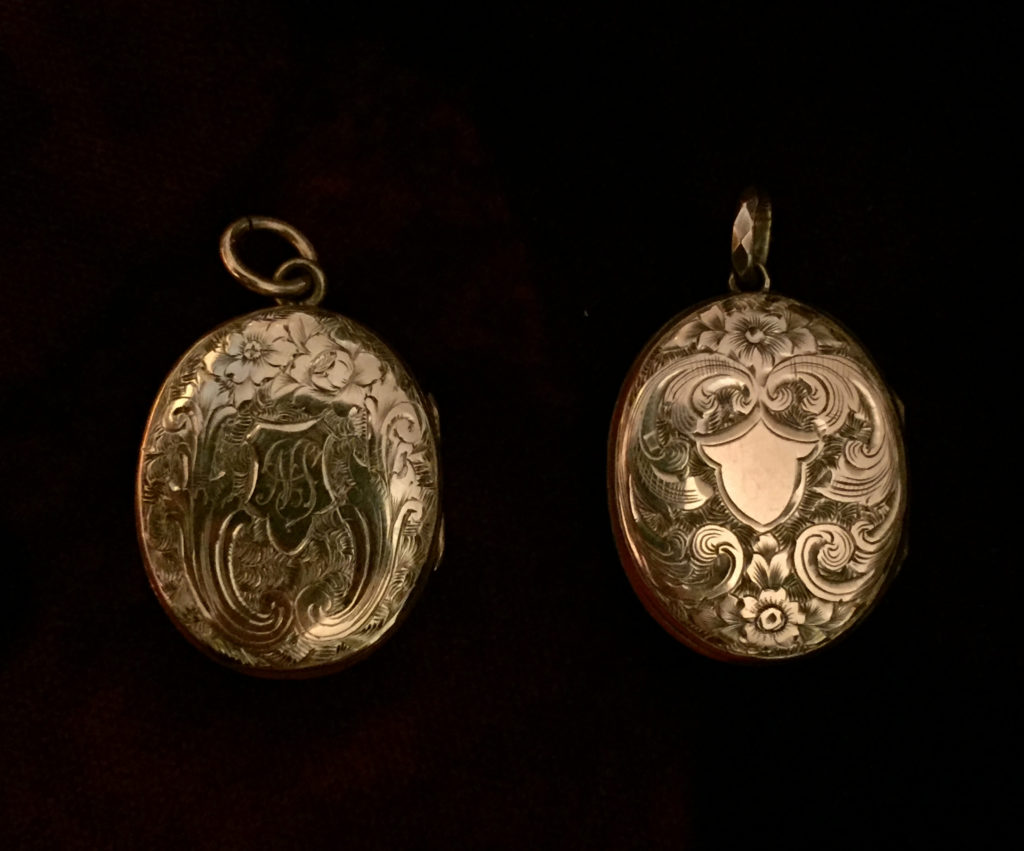
On the reverse, the acanthus and floral embellishments, leftovers from the Rococo period, appear as the standard design patterns for the mid to latter 19th century, flanking an un-etched cartouche. This element, as with many other metal fashion accessories in the 19th century, was for the initials of the loved one.

It is the interior of the locket that holds the most valuable element of all. By this time, photographs were being incorporated into lockets, another reason why larger versions of these designs exist. The photograph and hair balance on the left and right of the interior was typical. Due to lockets being perpetually fashionable, as they can be hidden, worn over the heart and hold an element of a loved one, they are arguably more personal as a memento than a ring, This is why many of the lockets that have lasted to today have the hair/photograph taken out and been reused. In the example of the earlier design, the hair work remains in perfect condition. The wide weave is as perfect today as it was when it first woven. The blue material backing was typical for this time, as through coincidence or preference, blue material was a common base for these jewels.
Having two lockets in such prime condition ensures us that they are not lost and will not go before. They are still as vital in their messaging, thanks to the branding of the Victorians, being bold statements of interpersonal love and faith.




